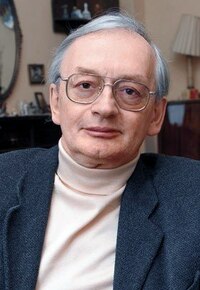
Photo from wikipedia
We investigate the cosmic evolutions in the extended Starobinsky model (eSM) obtained by adding one RabRab term to the Starobinsky model. We discuss the possibility of various cosmic evolutions with… Click to show full abstract
We investigate the cosmic evolutions in the extended Starobinsky model (eSM) obtained by adding one RabRab term to the Starobinsky model. We discuss the possibility of various cosmic evolutions with a special focus on the radiation-dominated era (RDE). Using simple assumptions, a second-order non-linear differential equation describing the various cosmic evolutions in the eSM is introduced. By solving this non-linear equation numerically, we show that the various cosmic evolutions, such as the standard cosmic evolution (a ∝ t 1/2) and a unique oscillating cosmic evolution, are feasible due to the effects of higher-order terms introduced beyond Einstein's gravity. Furthermore, we consider big bang nucleosynthesis (BBN), which is the most important observational result in the RDE, to constrain the free parameters of the eSM. The primordial abundances of the light elements, such as 4He, D, 3He, 7Li, and 6Li by the cosmic evolutions are compared with the most recent observational data. It turns out that most non-standard cosmic evolutions can not easily satisfy these BBN constraints, but a free parameter of the viable models with the oscillating cosmic evolution is shown to have an upper limit by the constraints. In particular, we find that the free parameter is most sensitive to deuterium and 4He abundances, which are being precisely measured among other elements. Therefore, more accurate measurements in the near future may enable us to distinguish the eSM from the standard model as well as other models.
Journal Title: Journal of Cosmology and Astroparticle Physics
Year Published: 2022
Link to full text (if available)
Share on Social Media: Sign Up to like & get
recommendations!